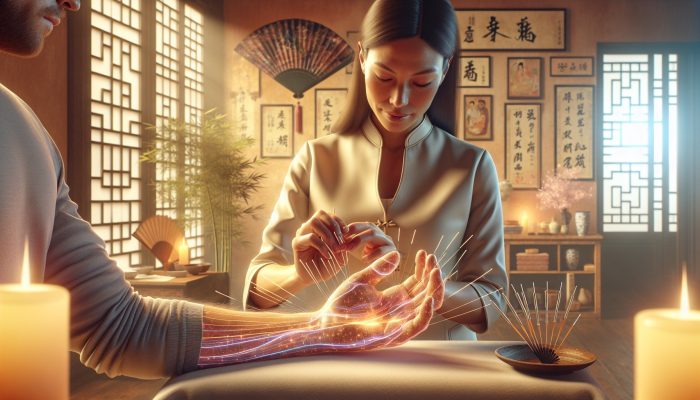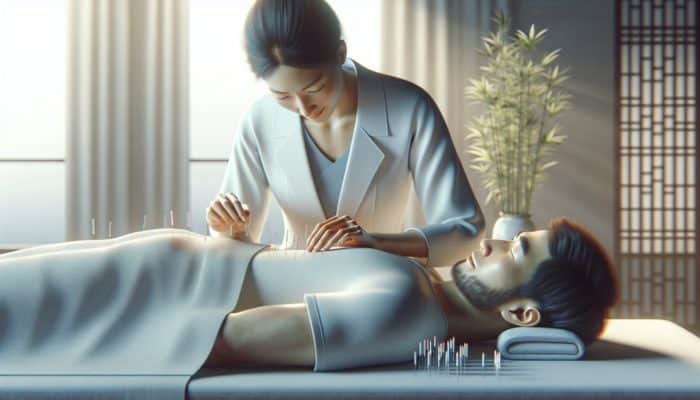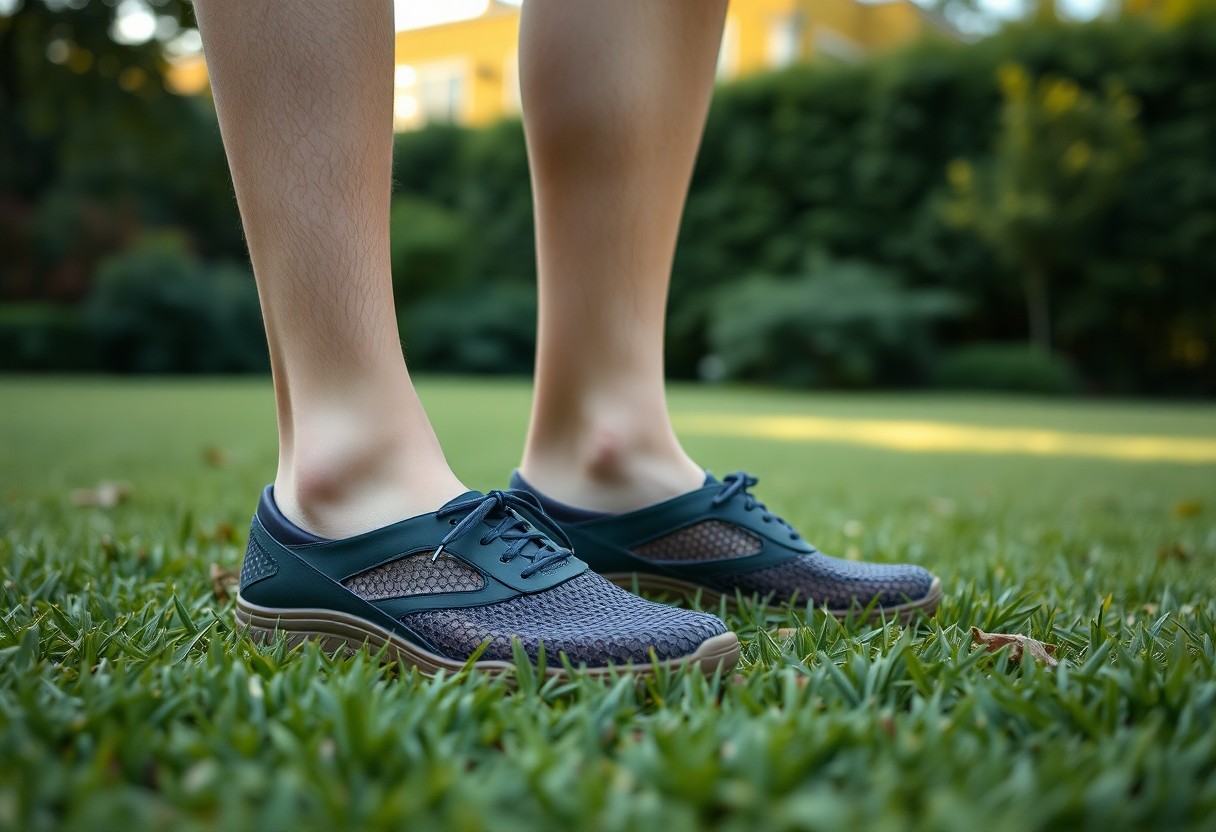Comprehensive Guide to Effectively Managing Shingles Pain with Acupuncture in the UK
Understanding Shingles: Symptoms and Effects on Patients
Shingles, clinically identified as herpes zoster, presents as an intensely painful condition resulting from the reactivation of the varicella-zoster virus, the same virus responsible for chickenpox. After the initial chickenpox infection, this virus can lie dormant within the nervous system for years. Various factors can trigger its reactivation, such as significant stress, concurrent illness, or a compromised immune system. A defining characteristic of shingles is a blistering rash that emerges in a specific dermatomal pattern, typically affecting one side of the body. The pain associated with shingles is often severe and debilitating, frequently described as a burning or stabbing sensation. Additionally, many individuals continue to suffer from ongoing pain known as postherpetic neuralgia, which can drastically diminish their overall quality of life.
People suffering from shingles may experience various common symptoms, such as:
- A painful, blistering rash that appears in a stripe
- Preceding sensations of itching and tingling
- Persistent fatigue and a general sense of malaise
- Headaches along with heightened sensitivity to light
- Presence of fever or chills
- Muscle pain and discomfort
Grasping the complexities of shingles is vital for administering effective treatment, which highlights the necessity for approaches that tackle both the acute pain during the outbreak and the long-term discomfort that frequently persists afterward.
Transform Your Pain Management: How Acupuncture Can Alleviate Shingles Discomfort
Acupuncture is a revered modality within traditional Chinese medicine, characterized by the insertion of ultra-fine needles into designated points on the body to stimulate the flow of energy, or “qi.” This practice has surged in popularity in the UK as a complementary therapy for various health issues, including the pain linked to shingles. By concentrating on specific acupuncture points, practitioners aim to activate the body’s inherent pain relief mechanisms, reduce inflammation, and foster overall health and wellness.
The history of acupuncture in the UK traces back to the 17th century, but it only gained widespread acknowledgment in the late 20th century. An increasing recognition of acupuncture’s benefits, especially pertaining to pain management, has led to its greater application within clinical practices across the nation. The NHS is progressively integrating acupuncture into certain pain management protocols, reflecting a robust body of research that supports its efficacy.
Unlock the Benefits of Acupuncture for Shingles Patients in the UK
Acupuncture presents a natural, non-invasive avenue for managing shingles pain, making it an appealing choice for many individuals in the UK. This therapy does not depend on pharmaceuticals or their associated side effects, a significant consideration for patients seeking alternative pain relief solutions. Numerous individuals report substantial symptom alleviation following acupuncture sessions, leading to an enhanced quality of life.
The primary benefits of acupuncture for those suffering from shingles include:
- A noticeable decrease in both the intensity and duration of pain
- Reduced dependence on pain medications
- Improved emotional health and effective stress management
- Enhanced immune system performance
- Promotion of relaxation and the development of coping strategies
- Potential relief from associated symptoms, such as itching and fatigue
These advantages underscore the significance of acupuncture as a viable therapeutic option for individuals grappling with shingles pain throughout the UK.
Insights from Experts on Acupuncture for Shingles Pain Management
Expert Opinions on Acupuncture’s Efficacy for Shingles Pain Relief in the UK
Prominent practitioners and researchers in the UK maintain a positive perspective on acupuncture’s effectiveness in alleviating shingles pain. Numerous clinicians have noted that patients who engage in acupuncture often report remarkable pain relief and improved overall health. An illustrative case arises from the London Pain Clinic, where acupuncture is woven into a comprehensive strategy for managing pain among shingles patients. Clinicians there indicate that a significant number of their patients experience considerable relief after undergoing multiple acupuncture sessions.
Experts suggest that acupuncture has the capacity to modulate pain pathways within the nervous system, which can be particularly beneficial for individuals suffering from the acute pain associated with shingles. Many practitioners emphasize the necessity of personalized treatment plans, tailoring acupuncture points and techniques to align with each patient’s unique presentation of shingles.
Integrating Acupuncture into NHS Care for Shingles Patients: A Strategic Approach
The incorporation of acupuncture into NHS care for shingles patients requires a series of strategic initiatives. First and foremost, increasing awareness among healthcare providers regarding the advantages of acupuncture as an adjunct therapy is essential. Training sessions targeting NHS staff that focus on acupuncture’s effectiveness in pain management could strengthen the multidisciplinary approach to treating shingles patients.
In addition, NHS trusts could establish partnerships with accredited acupuncture clinics, thereby providing patients access to these vital services as part of their comprehensive treatment plans. Furthermore, pilot programs could be initiated to evaluate the effectiveness of acupuncture in clinical environments, gathering invaluable data that could influence broader NHS policies. Lastly, ensuring that acupuncturists possess relevant certifications and training specifically related to shingles treatment would bolster confidence in this integrative approach.
Recent Research Findings on Acupuncture in the UK: An Overview

Recent research conducted in the UK highlights acupuncture’s substantial role in managing shingles pain. Studies indicate that patients who undergo acupuncture experience significant reductions in pain during both the acute phase of shingles and the postherpetic neuralgia phase. A study from a leading UK university determined that acupuncture could effectively reduce pain intensity by up to 50% within just a few treatment sessions.
These findings emphasize acupuncture’s potential as a legitimate treatment option within the pain management landscape for shingles, suggesting a trend toward more integrative care models. Experts anticipate that ongoing research will further clarify the mechanisms through which acupuncture alleviates shingles pain, reinforcing its position within the UK healthcare system.
Comparative Analysis: Acupuncture Versus Conventional Shingles Treatments in the UK
Acupuncture presents a compelling alternative to traditional shingles treatments, with numerous UK experts advocating for its inclusion alongside conventional therapies. While antiviral medications and pain relief drugs are frequently prescribed, these treatments may carry side effects and might not effectively manage pain for every patient.
Clinical data indicates that acupuncture can yield comparable, if not superior, outcomes in pain relief. Case studies from various UK clinics demonstrate that patients who incorporate acupuncture into their treatment plans often report quicker recovery times and an enhanced quality of life. This complementary approach fosters a more holistic healing process, increasingly recognized as essential for addressing complex conditions like shingles.
Essential Training for UK Acupuncturists Treating Shingles Patients
To effectively manage shingles pain, acupuncturists in the UK must undergo extensive training and obtain the necessary qualifications. Typically, an accredited acupuncture training program demands a minimum of three years of study, encompassing both theoretical knowledge and practical experience.
Postgraduate training focused on pain management and therapies particular to shingles is also beneficial. Acupuncturists are encouraged to pursue continuing education opportunities, attending workshops and seminars that concentrate on conditions like shingles to remain informed about best practices. Certification from reputable professional organizations in the UK, such as the British Acupuncture Council, ensures that practitioners uphold established standards for competence and safety, especially in treating complex pain conditions.
Understanding the Mechanisms of Acupuncture for Shingles Pain Relief in the UK
Targeted Acupuncture Points for Effective Shingles Pain Relief
Acupuncturists in the UK commonly focus on several key points to alleviate shingles pain. Notable acupuncture points frequently utilized include LI4 (Hegu), celebrated for its analgesic effects, and ST36 (Zusanli), which bolsters immune function and enhances overall vitality. Additional points such as SP6 (Sanyinjiao) and PC6 (Neiguan) may also be activated to address systemic symptoms related to shingles, including anxiety and fatigue.
The effectiveness of acupuncture stems from its ability to stimulate these points, promoting the release of endorphins and enhancing blood circulation to affected areas. A thorough understanding of these specific points can significantly elevate treatment efficacy, as skilled practitioners adapt their techniques based on each individual’s presentation and their responses to previous sessions.
Recommended Number of Acupuncture Sessions for Shingles Pain Relief in the UK
The number of acupuncture sessions needed for shingles pain relief varies greatly among individuals, influenced by factors such as symptom intensity, the duration of the shingles outbreak, and the individual’s overall health status. Typically, UK practitioners recommend an initial series of six to eight sessions, spaced one week apart, to establish a robust foundation for pain relief and symptom management.
Some patients may find relief after just a few sessions, while others may require continued treatment for several weeks to achieve optimal results. Regular assessments during treatment allow practitioners to modify the frequency and duration of sessions based on the patient’s progress, ensuring a tailored care approach that addresses the unique needs of individuals suffering from shingles.
Can Acupuncture Reduce the Frequency of Shingles Outbreaks in the UK?
Certain patients in the UK have reported a decrease in the frequency and severity of shingles outbreaks after participating in regular acupuncture sessions. Although acupuncture cannot directly prevent the reactivation of the varicella-zoster virus, it may assist in strengthening the immune system, potentially lowering the likelihood of future outbreaks.
By promoting relaxation and mitigating stress—two significant contributors to the virus’s reactivation—acupuncture may function as a preventive measure as well. Patients are encouraged to view acupuncture not just as a treatment for active outbreaks but as part of a comprehensive strategy to maintain their overall health and wellness.
Financial Considerations for Acupuncture Treatments for Shingles in the UK
The cost of acupuncture sessions for shingles varies significantly throughout the UK, influenced by factors such as the practitioner’s location, level of expertise, and available facilities. On average, patients can expect to pay between £40 and £80 per session.
In metropolitan areas like London, prices tend to be higher within this range, while rural practices may provide more affordable options. Additionally, some insurance providers may cover acupuncture treatments, and NHS-funded options might be available for eligible patients, highlighting the importance of exploring various financial avenues to access this beneficial therapy.
NHS-Funded Acupuncture Services for Shingles in the UK: Availability and Access
Yes, specific NHS trusts across the UK offer acupuncture as part of their pain management services. While the availability of these services may differ based on geographical location and specific health authorities, some trusts have started recognizing the effectiveness of acupuncture for conditions like shingles and have incorporated it into their care pathways.
Patients interested in NHS-funded acupuncture should consult their GP or pain management specialist to explore potential referrals. Moreover, advocacy for broader access to acupuncture services within the NHS is gaining momentum, emphasizing the increasing recognition of complementary therapies in effective pain management strategies.
Research-Based Benefits of Acupuncture for Shingles Pain Management
What Recent UK Research Reveals About Pain Reduction through Acupuncture
Research conducted in the UK strongly supports the notable pain reduction experienced by shingles patients who include acupuncture in their treatment plans. Various studies have demonstrated that individuals undergoing acupuncture report a marked decrease in pain levels during both the acute phase of shingles and the postherpetic neuralgia phase.
A prominent study revealed that nearly 70% of participants experienced at least a 50% reduction in pain intensity following a series of acupuncture sessions. These findings highlight acupuncture’s potential role as a valuable adjunct therapy in the comprehensive management of shingles pain, encouraging healthcare providers to consider its integration into standardized treatment practice.
Comparing Acupuncture with Traditional Treatments for Shingles in the UK
Comparative studies in the UK suggest that acupuncture may provide similar or even superior efficacy when compared to conventional treatments for shingles. Many patients report experiencing fewer side effects and improved outcomes when acupuncture is included in their pain management strategy compared to pharmaceutical options, which can often lead to dependency or other complications.
By analyzing patient experiences, UK experts have observed that those who integrate acupuncture with traditional treatments frequently achieve enhanced pain relief and quicker recovery times. This integrative approach underscores acupuncture’s potential as a beneficial complement to conventional therapeutic interventions, fostering broader acceptance of holistic treatment methods in clinical environments.
Long-Term Benefits of Acupuncture for Patients in the UK
Longitudinal studies conducted in the UK indicate that patients experiencing shingles pain can enjoy sustained benefits from acupuncture. Many individuals report not only immediate pain relief but also a decreased likelihood of future outbreaks and improved long-term symptom management.
These studies suggest that regular acupuncture can help modulate the nervous system’s response to pain, leading to lasting enhancements in pain perception and overall quality of life. With continued sessions, patients often find themselves better equipped to handle their symptoms and mitigate the emotional and psychological effects that accompany shingles.
Patient Experiences with Acupuncture for Shingles Pain in the UK
Testimonials from UK patients consistently highlight positive experiences with acupuncture in alleviating shingles pain. Many individuals report significant reductions in pain and discomfort after undergoing treatments, often noting improvements in their ability to engage in daily activities and enjoy a better quality of life.
Patients frequently express gratitude for the holistic approach of acupuncture, appreciating its focus on overall well-being rather than simply addressing symptoms. These personal accounts reflect a growing trend towards embracing acupuncture as a vital component of pain management strategies for shingles sufferers throughout the UK.
Best Practices for Acupuncture Treatment in the UK
Choosing a Qualified Acupuncturist for Optimal Shingles Pain Relief
Selecting a skilled and certified acupuncturist is crucial for effectively addressing shingles pain. Patients should seek practitioners who are registered with recognized professional bodies, such as the British Acupuncture Council or the Complementary and Natural Healthcare Council.
It is essential to verify the acupuncturist’s qualifications, ensuring they have completed accredited training programs and hold relevant certifications. Additionally, inquiring about their experience in treating shingles specifically can provide valuable insight into their proficiency. Reading patient reviews and testimonials can also assist in evaluating the practitioner’s effectiveness and overall patient satisfaction.
What to Expect During an Acupuncture Session in the UK
Understanding the process of an acupuncture session can alleviate concerns and enhance the overall experience for patients. Typically, patients will first participate in a comprehensive consultation, where the acupuncturist evaluates their medical history, current symptoms, and treatment objectives.
During the session, patients can anticipate lying down comfortably while the practitioner inserts ultra-fine needles into designated acupuncture points. Each needle placement may induce sensations of warmth or tingling, regarded as indicators of effective energy flow. The session generally lasts between 30 to 60 minutes, during which patients are encouraged to relax and concentrate on their breathing.
Preparing for Your Acupuncture Session in the UK
Proper preparation can significantly enhance the effectiveness of acupuncture for shingles pain. Patients should consider the following steps to optimize their experience:
- Wear loose, comfortable clothing to facilitate access to acupuncture points.
- Avoid heavy meals or excessive caffeine before the session, as this can hinder relaxation.
- Communicate openly with the acupuncturist about any medications or health conditions.
- Arrive punctually to allow for a thorough consultation prior to treatment.
- Bring a list of questions or concerns to discuss with the acupuncturist.
- Practice relaxation techniques before the appointment to enhance receptivity.
Being well-prepared can help patients maximize the benefits of their acupuncture sessions, contributing to improved pain management outcomes.
Effective Strategies to Enhance Acupuncture Outcomes for Shingles Pain
Home Care Techniques to Amplify the Benefits of Acupuncture in the UK
Combining acupuncture with effective home care strategies can greatly enhance outcomes for shingles pain. Patients are encouraged to maintain a balanced diet abundant in vitamins and minerals, which supports overall health and strengthens immune function. Engaging in stress-reducing practices such as yoga or meditation can also amplify the benefits of acupuncture, as stress is a known exacerbator of shingles symptoms.
Additionally, utilizing topical treatments, such as soothing creams or gels, can provide further relief for the rash and associated discomfort. Staying well-hydrated and ensuring adequate rest are crucial components of at-home care, as they promote the body’s healing processes. Together with regular acupuncture sessions, these strategies can create a comprehensive approach to effectively managing shingles pain.
Tracking Progress and Adjusting Treatment in the UK
Monitoring the effectiveness of acupuncture and making necessary adjustments to the treatment plan is vital for maximizing benefits. Patients should maintain a pain diary to document their symptoms, noting any changes in intensity, duration, or frequency of pain. This information can be invaluable during consultations with the acupuncturist, allowing for tailored treatment strategies based on the patient’s progress.
Regular evaluations and open communication with the acupuncturist enable timely modifications to the treatment plan, whether that involves adjusting acupuncture points, changing session frequency, or incorporating additional modalities. Emphasizing patient involvement in their own care enhances the overall effectiveness of the acupuncture journey.
Integrating Acupuncture with Other Therapies for Comprehensive Shingles Pain Management
Guidelines in the UK suggest various methods to combine acupuncture with other treatments for shingles pain to formulate a comprehensive care plan. Many experts advocate for patients to integrate acupuncture with conventional therapies, such as antiviral medications and topical treatments, to optimize overall pain relief and symptom management.
Moreover, complementary therapies like physiotherapy or cognitive-behavioral therapy can synergize with acupuncture, addressing both the physical and psychological dimensions of shingles pain. Collaborative care models involving a multidisciplinary team ensure that patients receive holistic support tailored to their individual needs. This integrative approach enhances patient outcomes and promotes a more effective healing process.
Established Benefits of Acupuncture for Shingles Pain Management in the UK
Acupuncture can significantly alleviate shingles pain, providing numerous advantages that resonate with UK patient experiences. Many individuals report reduced pain intensity, improved emotional well-being, and enhanced coping strategies, all contributing to an elevated quality of life.
The drug-free approach of acupuncture is particularly appealing for patients seeking alternatives to conventional pain management strategies. Additionally, the holistic nature of acupuncture fosters an overall sense of well-being, enabling patients to engage more fully in their daily lives. Positive feedback from UK patients reinforces acupuncture’s role as a valuable option for those facing the debilitating effects of shingles pain.
Criteria for Selecting a Qualified Acupuncturist for Shingles Pain in the UK
Choosing a certified acupuncturist in the UK is vital for effectively treating shingles pain. Patients should prioritize practitioners registered with recognized professional organizations, ensuring they meet necessary training standards. It is advisable to seek out practitioners with specific experience treating shingles, as this specialized knowledge can greatly enhance treatment effectiveness.
Patients can also benefit from personal recommendations or online reviews when selecting their acupuncturist. Establishing open lines of communication regarding treatment plans and experiences will foster a collaborative relationship, further supporting the patient’s journey towards pain relief.
Frequently Asked Questions (FAQs) About Acupuncture and Shingles
What is shingles and how does it manifest in patients?
Shingles is a viral infection caused by the varicella-zoster virus, leading to a painful rash that typically appears as blisters on one side of the body.
Can acupuncture effectively relieve shingles pain?
Yes, acupuncture has been shown to effectively alleviate shingles pain by stimulating specific points to enhance the body’s natural pain relief mechanisms.
How many acupuncture sessions are typically needed for shingles treatment?
Generally, six to eight acupuncture sessions are recommended for shingles pain, although this may vary based on individual needs and responses to treatment.
Are there any side effects associated with acupuncture?
Acupuncture is usually considered safe, but some patients may experience mild side effects such as temporary soreness or bruising at needle insertion sites.
Does the NHS provide funding for acupuncture treatments in the UK?
Yes, certain NHS trusts offer acupuncture as part of their pain management services, though availability may vary by location.
How does acupuncture compare to conventional shingles treatments in terms of effectiveness?
Acupuncture can provide comparable or superior pain relief compared to conventional treatments, often with fewer side effects, making it a valuable adjunctive therapy.
Can acupuncture prevent future outbreaks of shingles?
While acupuncture cannot directly prevent shingles, it may help strengthen the immune system and reduce stress, potentially lowering the frequency of outbreaks.
What qualifications should an acupuncturist possess to treat shingles?
A qualified acupuncturist should be registered with a professional body, have completed accredited training, and demonstrate expertise in effectively managing shingles pain.
What home care strategies can complement acupuncture for shingles treatment?
Effective home care strategies include maintaining a balanced diet, engaging in stress-reducing activities, and utilizing topical treatments for the rash.
Can acupuncture aid in alleviating postherpetic neuralgia symptoms?
Yes, acupuncture has been reported to assist in alleviating symptoms of postherpetic neuralgia, providing pain relief even after the shingles rash has resolved.
Connect with us on Facebook for more insights!
The Article: Acupuncture for Shingles Pain: Effective Relief in the UK appeared first on https://mcrtherapies.co.uk
The Article Acupuncture for Shingles Pain Relief in the UK Was Found On https://limitsofstrategy.com


























